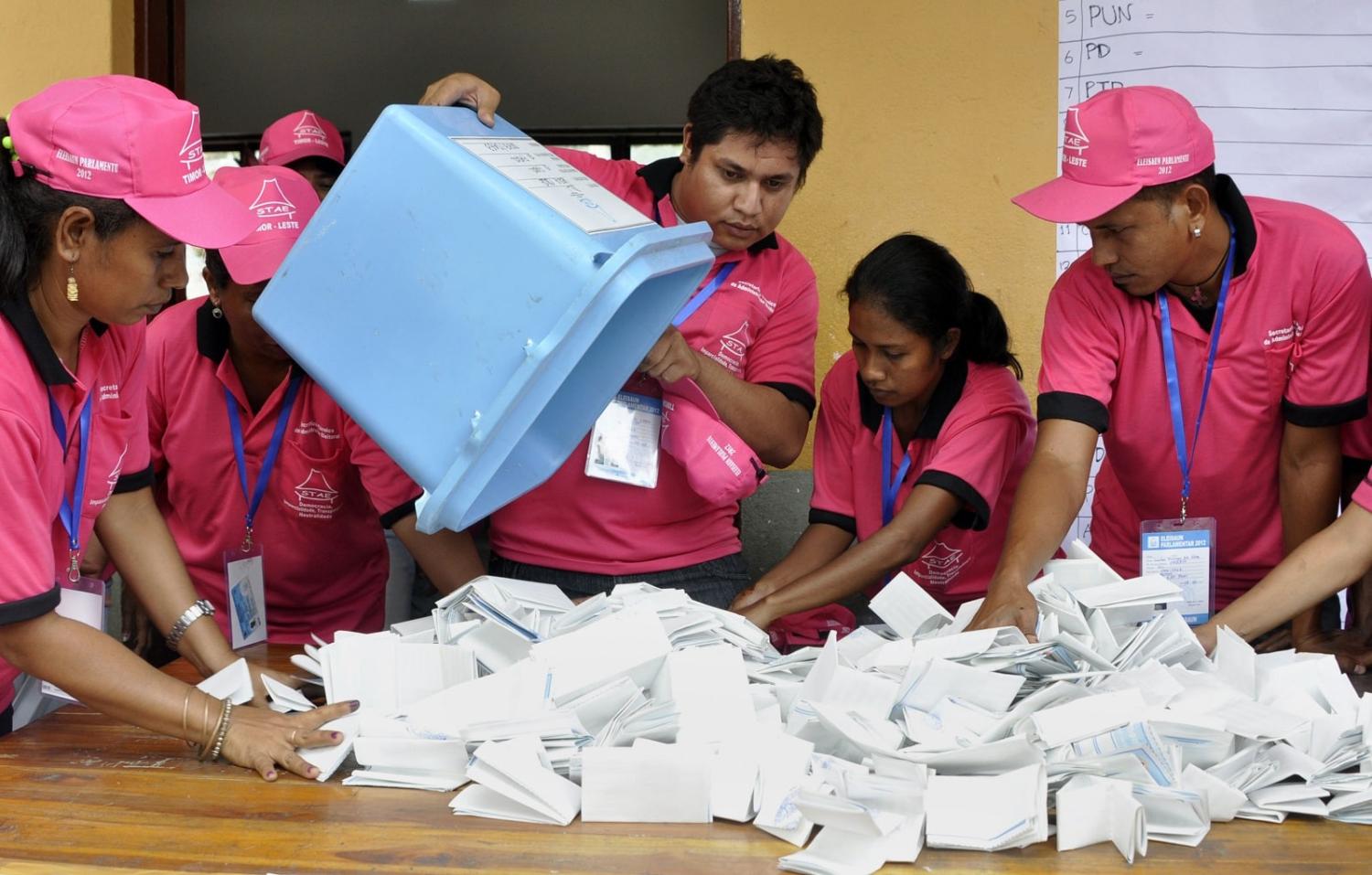Election campaigns in Timor-Leste are a vibrant affair. The contesting political parties hold boisterous rallies, often featuring local cultural traditions and music, and party flags dot the landscape in cities and villages alike. Near the end of the campaign period, parties convene massive motorbike caravans in Dili, assembling tens of thousands of supporters from both in and outside of the capital as a public show of strength.
The Timorese people are incredibly engaged in their electoral process. Parliamentary elections typically see more than 80 per cent of eligible voters turn out – a rate higher than in many mature democracies. They take their democratic duties seriously; after all, this is a country where 97 per cent of eligible voters turned out for the 1999 popular consultation that put the country on the path to independence, despite gross levels of intimidation and violence.
This year’s parliamentary election, slated for 21 May, is being driven by two factors – the never-ending contest between the country’s two most influential political leaders, Xanana Gusmão and Mari Alkatiri, and the pending development of the Greater Sunrise gas fields. With a campaign period running from 19 April to 18 May, the contest merits unpacking.
Anecdotal evidence and historical trends point towards Xanana Gusmão’s National Congress for Timorese Reconstruction (CNRT) starting the campaign as a favourite to win a plurality – a crucial dynamic, given the party that takes first place is granted the first opportunity to form government under the constitution. CNRT is closely followed by Mari Alkatiri’s Revolutionary Front for an Independent East Timor (FRETILIN), which will vigorously contest the campaign with its tested organisational machine and loyal voter base in the country’s eastern municipalities.

Neither party formed a pre-election coalition, as CNRT did with the Alliance for Change and Progress (AMP) in 2018. This may seem peculiar for FRETILIN, as it is part of the incumbent governing coalition, but it has always contested elections on its own. It made a show of unity with two of the other coalition parties, Kmanek Haburas Unidade Nasional Timor Oran (KHUNTO) and the People’s Liberation Party (PLP), soon after the election was called, but it remains to be seen if this will endure. It wasn’t so long ago that KHUNTO and PLP ran under the AMP banner, after all.
Fifteen parties are contesting the election alongside CNRT and FRETILIN. In Timorese politics, smaller parties matter and usually hold the balance of power when it comes time to form a government. KHUNTO is tipped to increase its vote share due to its appeal among young Timorese and disciplined party organisation. PLP and the Democratic Party (PD) are grappling with internal pressures that may damage their fortunes, but both will mount strong, credible campaigns.
Twelve of the parties are micro parties; two of them – Party of Unity for Democratic Development (PUDD) and Timorese Union Democratic (UDT) – hold one seat each in the current parliament. The collective vote share of micro parties peaked in 2012 at 23 per cent and progressively declined to eight per cent by 2018. This time around, it may decline even further, reflecting a broader consolidation of voters by CNRT and FRETILIN due to increased polarisation. Regardless, in a competitive election, every vote matters, and micro parties can draw away enough votes from larger parties to make the difference.
While it’s certainly possible for one party to win an outright majority, actually doing so will be difficult. A just-released poll shows CNRT doing exactly that, but its methodology raises questions about accuracy, and the timing of its release seems a little too convenient. CNRT has never won an outright majority when running on its own, and Gusmão’s sky-high favourability ratings don’t always translate into votes.
Other factors reinforce the difficulty of CNRT winning an outright majority. FRETILIN has consistently won just under 30 per cent at every election since 2007, and it cracked its own glass ceiling in 2018 by winning 34 per cent. It is still contending with internal divisions laid bare during last year’s presidential election, but its placement of Lere Anan Timur in the fourth spot on its candidate list signals that the party is coming together. In addition, it stands to benefit from a weak showing by PLP, which receives much of its vote share from eastern municipalities.
To win an outright majority, CNRT needs to increase its vote share in the western municipalities where it has traditionally performed strongly. But KHUNTO and PD also draw support from the west, and a robust performance by KHUNTO may complicate CNRT’s aspirations. It stands to win over any defectors from PD, but the latter’s roots in the resistance-era student movement and the growing popularity of Mariano “Assanami” Sabino, who tops the party’s candidate list, may stem that flow.
Thus, the race to win a plurality is on. The campaign will be a robust affair, and perhaps the last one dominated by Gusmão, Alkatiri and resistance-era heroes from the “Generation of ’75”, raising the stakes in an already high-stakes election that will be an inflection point for Southeast Asia’s youngest democracy.

